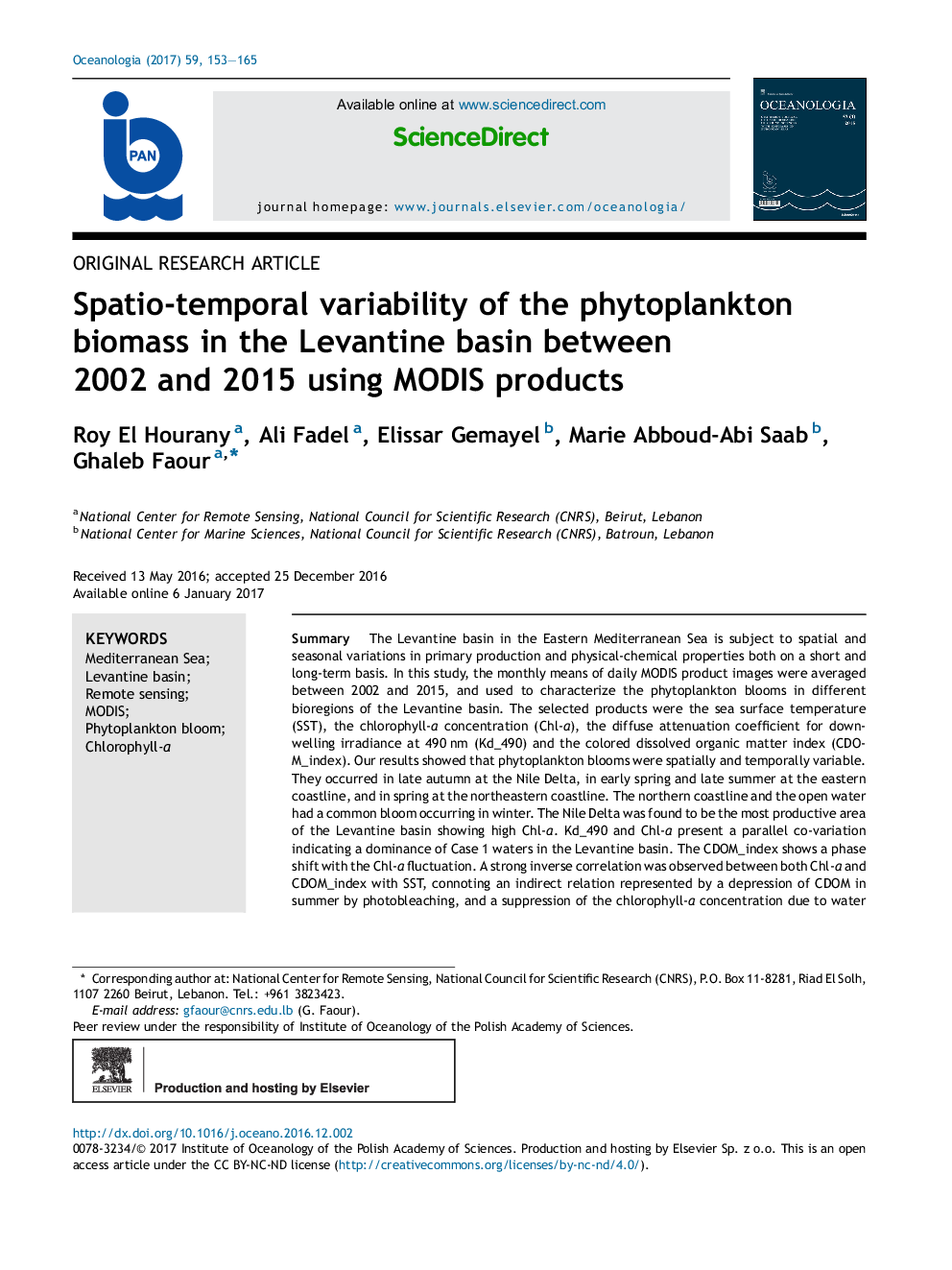| Article ID | Journal | Published Year | Pages | File Type |
|---|---|---|---|---|
| 5519755 | Oceanologia | 2017 | 13 Pages |
SummaryThe Levantine basin in the Eastern Mediterranean Sea is subject to spatial and seasonal variations in primary production and physical-chemical properties both on a short and long-term basis. In this study, the monthly means of daily MODIS product images were averaged between 2002 and 2015, and used to characterize the phytoplankton blooms in different bioregions of the Levantine basin. The selected products were the sea surface temperature (SST), the chlorophyll-a concentration (Chl-a), the diffuse attenuation coefficient for downwelling irradiance at 490Â nm (Kd_490) and the colored dissolved organic matter index (CDOM_index). Our results showed that phytoplankton blooms were spatially and temporally variable. They occurred in late autumn at the Nile Delta, in early spring and late summer at the eastern coastline, and in spring at the northeastern coastline. The northern coastline and the open water had a common bloom occurring in winter. The Nile Delta was found to be the most productive area of the Levantine basin showing high Chl-a. Kd_490 and Chl-a present a parallel co-variation indicating a dominance of Case 1 waters in the Levantine basin. The CDOM_index shows a phase shift with the Chl-a fluctuation. A strong inverse correlation was observed between both Chl-a and CDOM_index with SST, connoting an indirect relation represented by a depression of CDOM in summer by photobleaching, and a suppression of the chlorophyll-a concentration due to water stratification, together with nutrient stress. An overestimation of the Chl-a values had been signaled by the use of the CDOM_index, suggesting a correction plan in a latter study.
